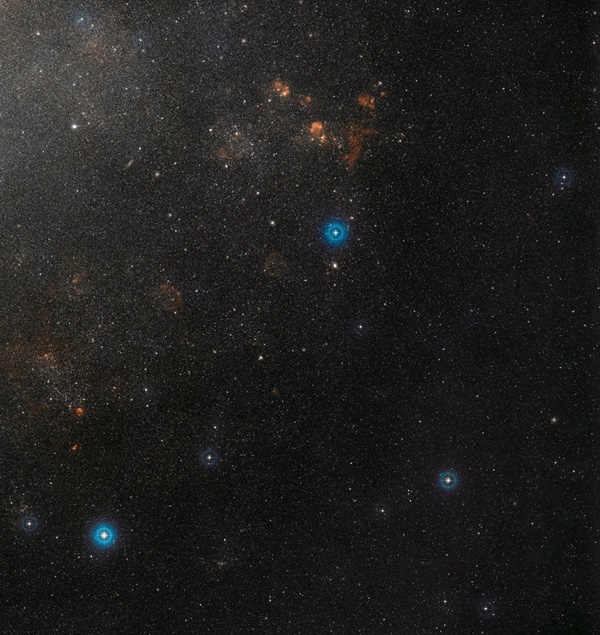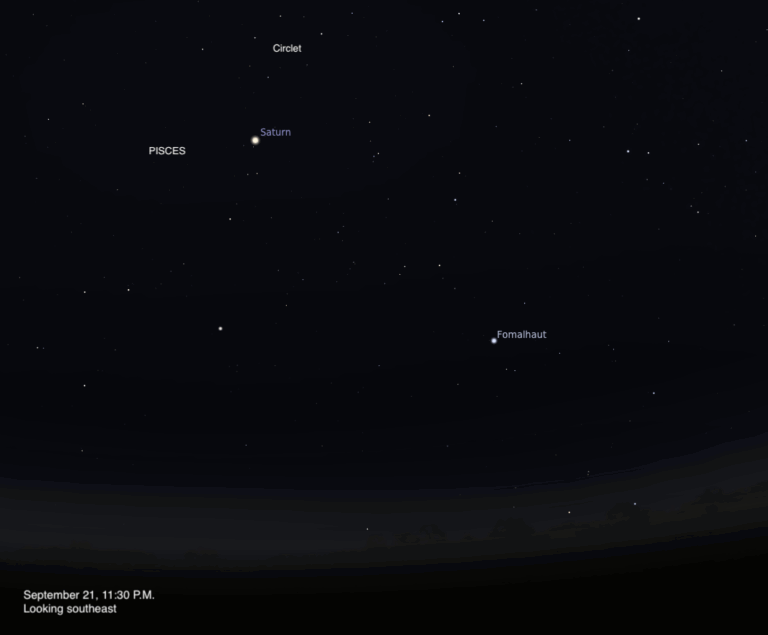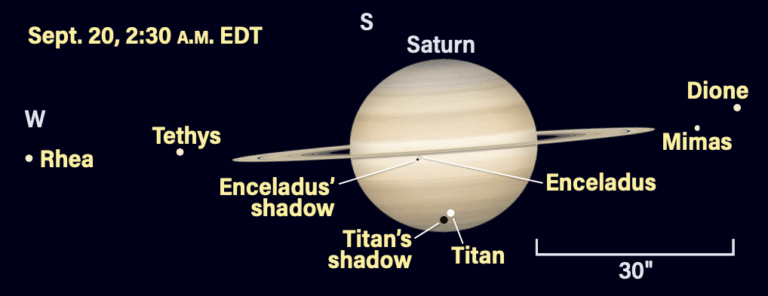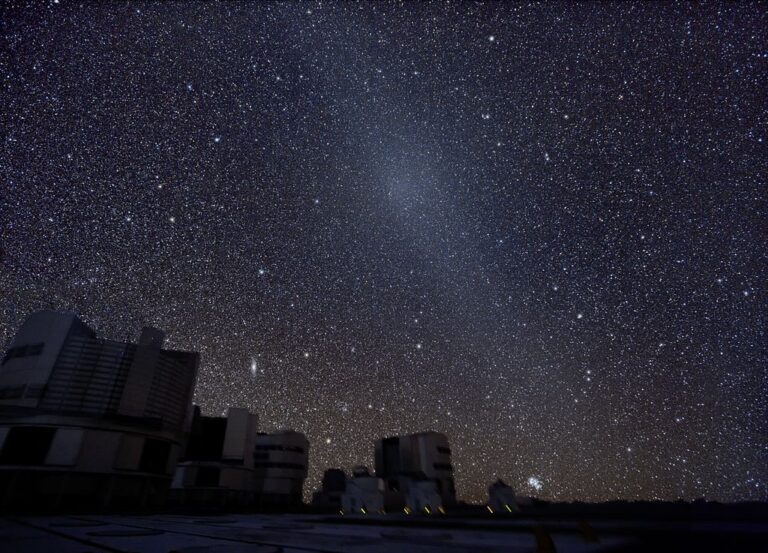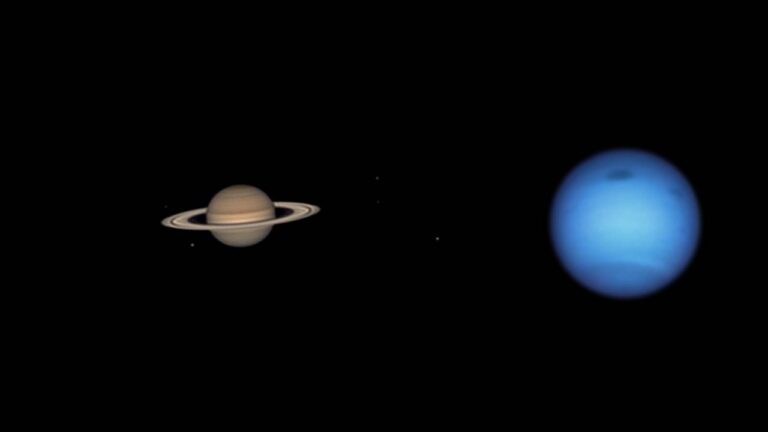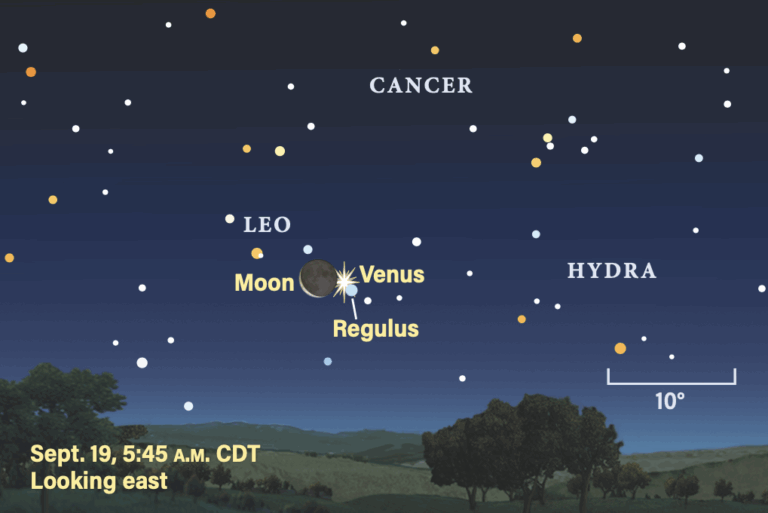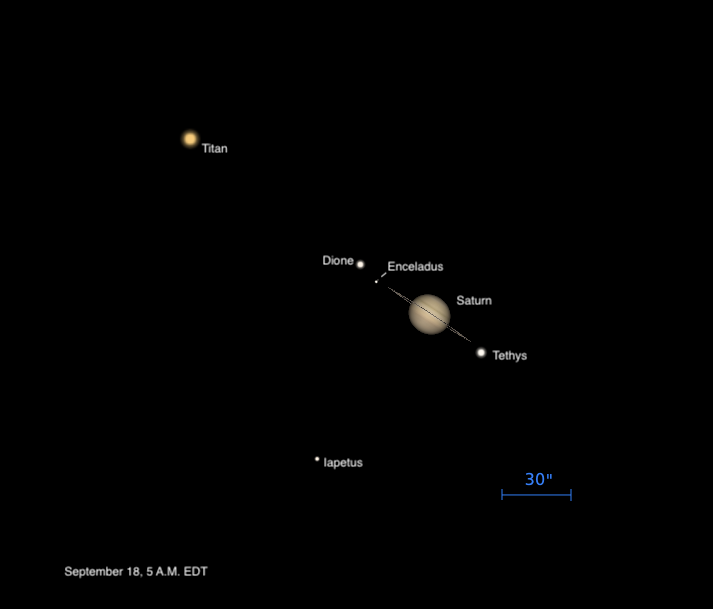Key Takeaways:
A dwarf irregular galaxy, the Large Magellanic Cloud (LMC) is one of the most stunning deep-sky treasures of the southern celestial hemisphere. It is visible to the unaided eye as a soft glow spanning 9° by 11° of sky across portions of Mensa and Dorado.
Its name, along with that of its companion the Small Magellanic Cloud, were bestowed in honor of explorer Ferdinand Magellan. He and his crew were the first to bring news of these sights to the Western world after their round-the-world voyage from 1519 to 1522. Of course, Indigenous peoples from the Southern Hemisphere had been familiar with both since ancient times.
Estimates place the LMC roughly 160,000 light-years away. It is home to approximately 30 billion stars — about one-tenth the Milky Way’s stellar population. The LMC is also peppered with 700 open clusters and 60 globular clusters, and its many regions rich in interstellar gas and dust make it a hotbed of star formation.
The pull of the Milky Way has distorted the LMC into the galactic mélange we see in photographs. However, careful observational studies have shown that the LMC possesses a subtle spiral structure with two truncated arms extending from a central bar. The overall shape resembles a seahorse displaying its prominent tail.
That tail is one of the sky’s most magnificent HII regions: the Tarantula Nebula. At its center, thousands of massive stars are blasting out intense radiation and winds, heating the surrounding hydrogen gas to millions of degrees.
Make sure to explore Astronomy’s full list of 101 cosmic objects you must see. New entries will be added each week throughout 2022.
To get the latest astronomical news and observing content delivered directly to your door, subscribe to Astronomy magazine today!

